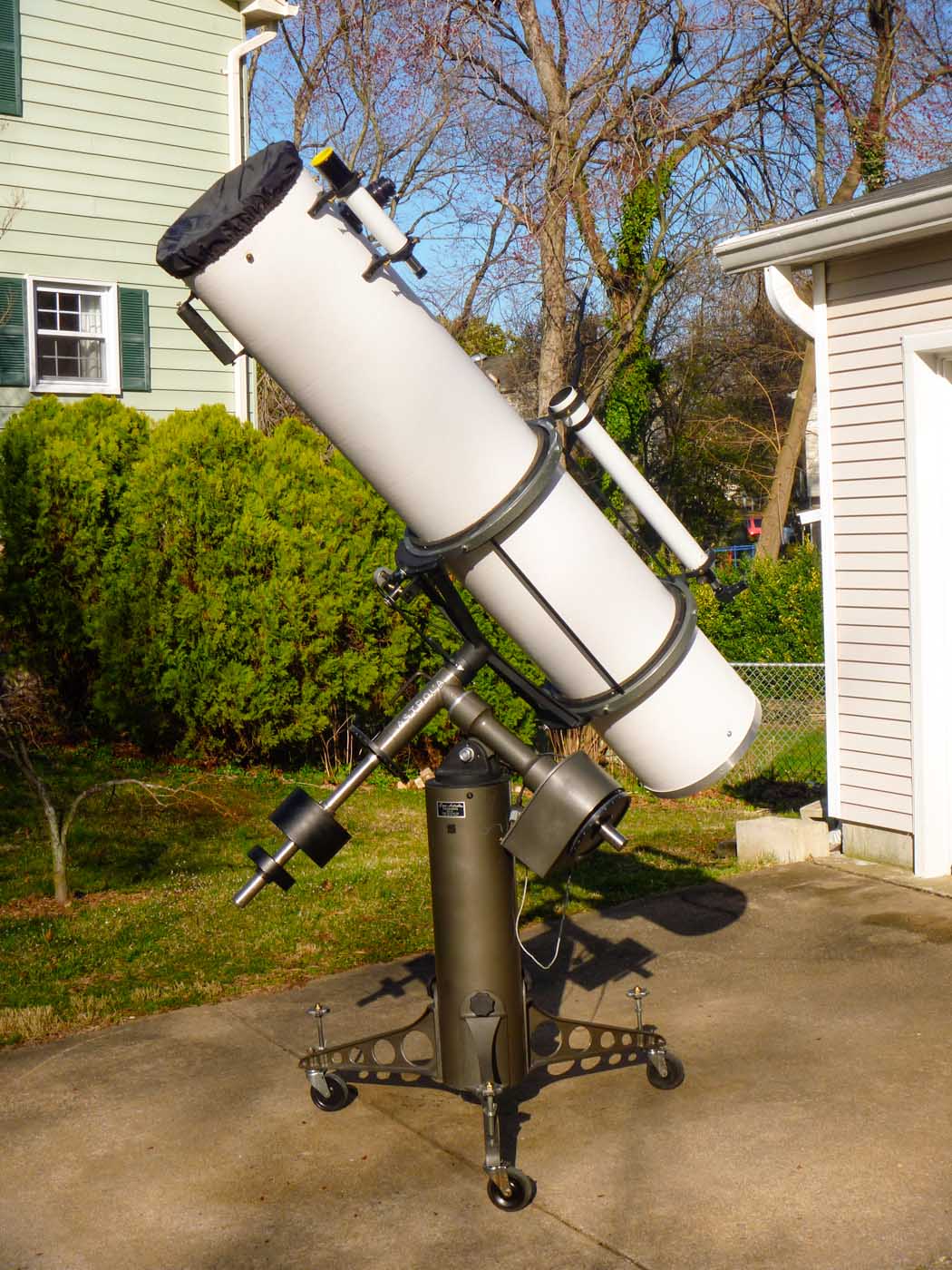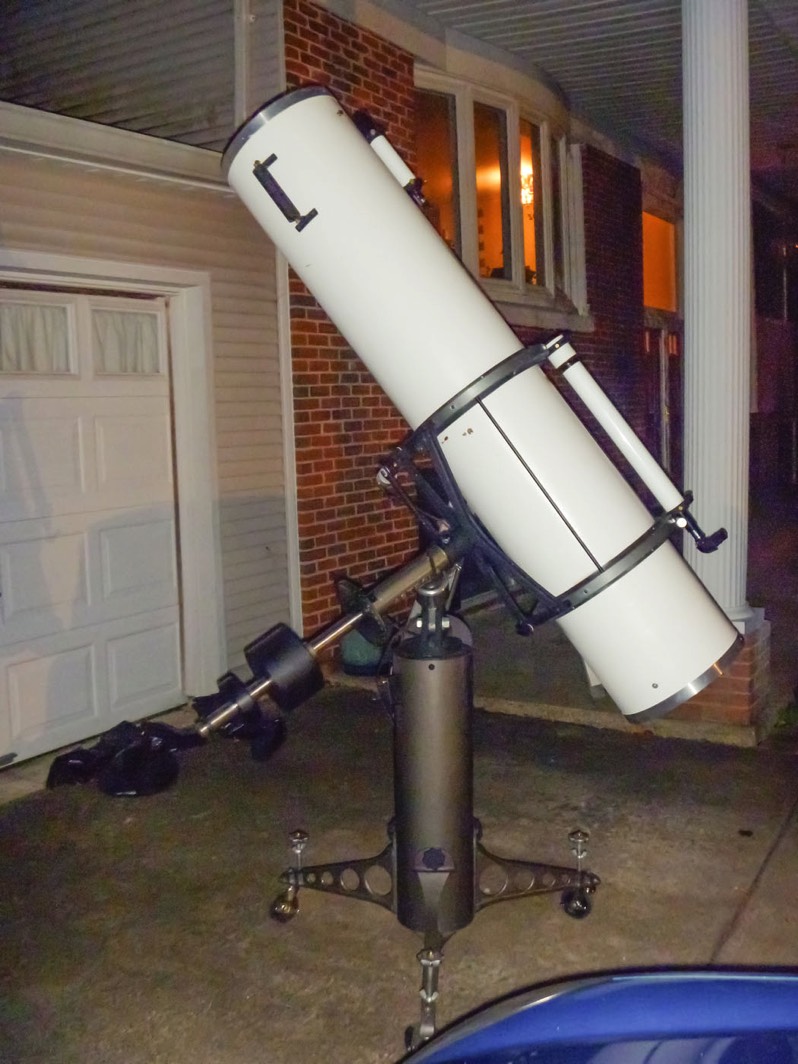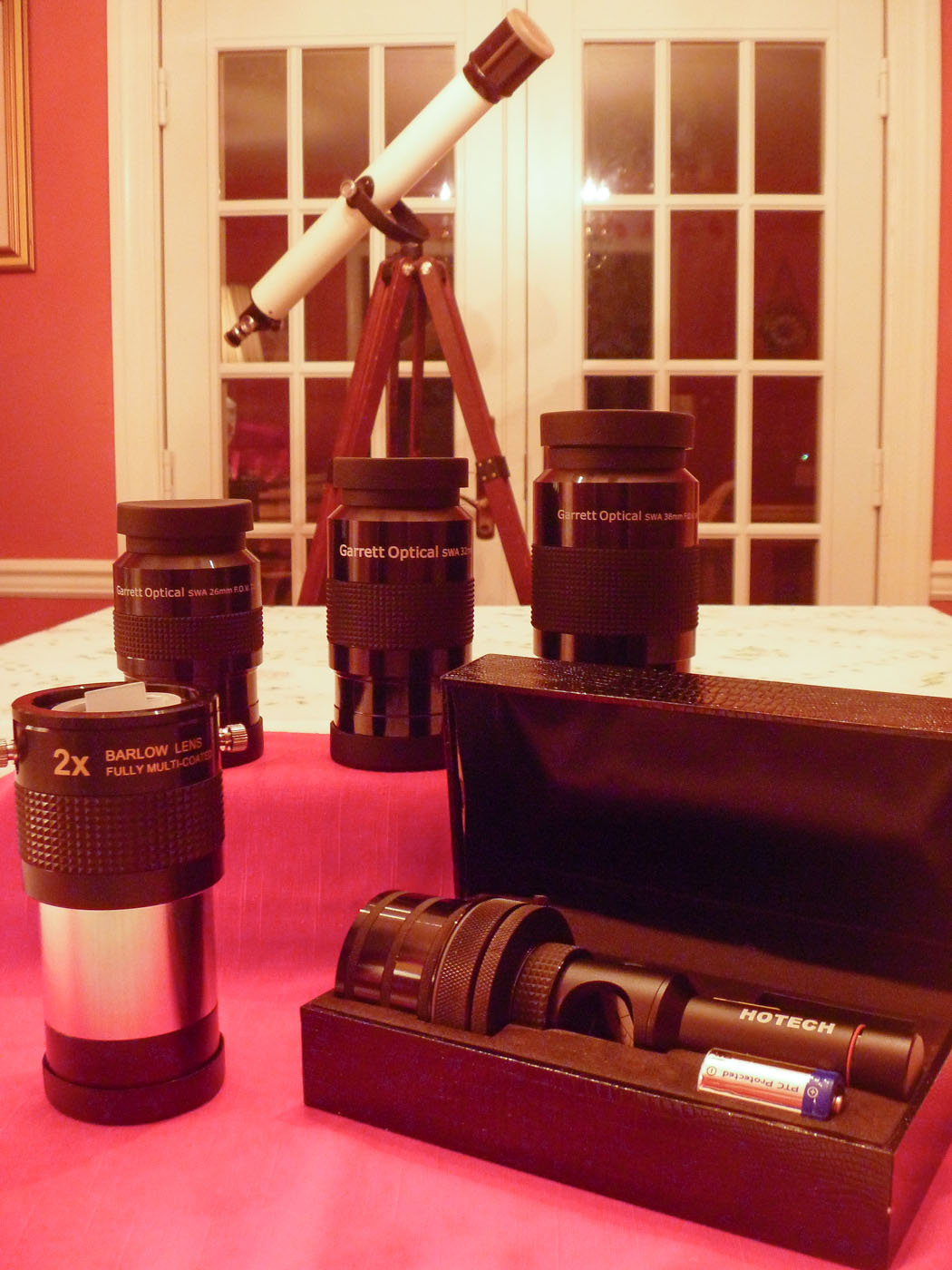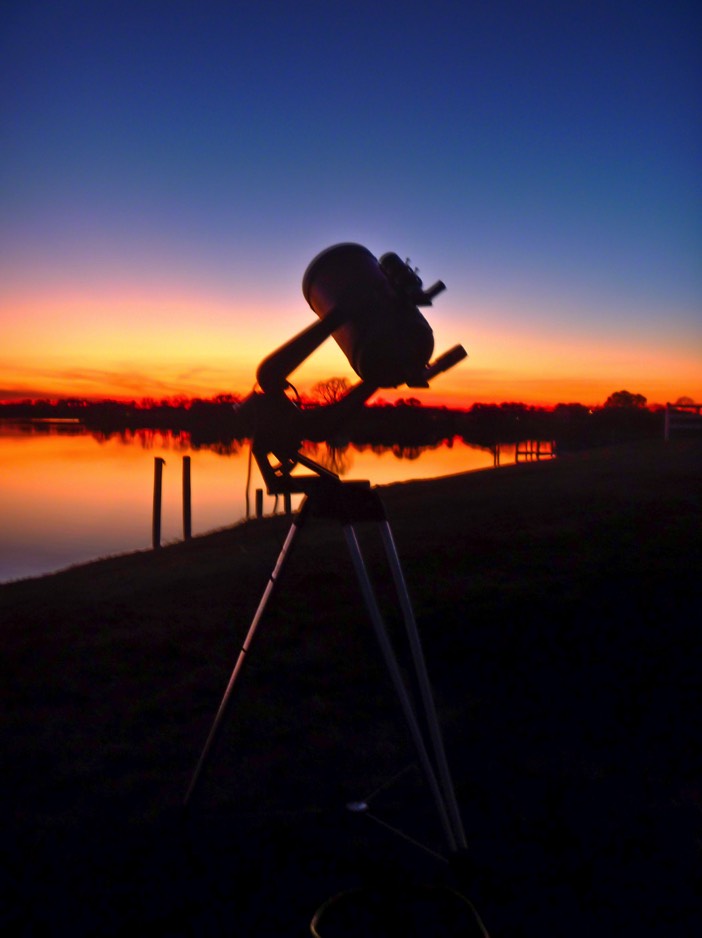Part Three - Observation
"1979 12.5 " F/6 Model D
Transportable
by John Higbee
Click on any image for larger size
It was now November, and the Cave was ready for “first light”. After a rough “visual collimation” (dating to my 1960’s Edmund 4.25” reflector days), I rolled the Cave out into my driveway at dusk, and began “first lighting” the Cave using my 1.25” Celestron 32mm Plossl. The results:
I love my orange tube C8 from 1976, but the Cave blows it away...the star fields sharply focus to a mass of pinpoints, and the field is much brighter and more populated (larger aperture wins here, naturally). The rotating tube is a great feature, but I had to use a two-step kitchen stepladder to get to the eyepiece at elevations above 40 degrees.
Went for easy stuff to begin with...
Vega: Like looking at a blue white acetylene lamp, with four delicate diffraction spikes from the spider...I couldn't get over the number of faint stars in perfect focus I could see in the same field!
Albireo: the VIVID orange and blue of this double in the Cave was a new experience for me, and I've observed this double hundreds of times over the last 37 years.
Ring Nebula (M57): First time I didn’t had to use averted vision to get the full impression of this planetary. Again, all these star fields were so much more populated than I was expecting...just amazing! Mount worked great!
Several hours later, Jupiter cleared the treelike. Again, I got another brand new look at an old friend. I boosted up to my 15mm Plossl EP for this... approximately 125X. Jupiter looked like a globe, vice the disk I was used to seeing with the C8. There was definitely an impression of depth to the scene...both for Jupiter's disk, and the relative positions of Jupiter and the Galilean moons (all four of which were preceding Jupiter through the field of view). As for Jupiter itself, I saw three reddish detailed belts with eddies and texture...two tinted polar regions, one of which had a distinctive greenish-gray tint to it...the best viewing of Jupiter I've ever been fortunate enough to experience.
On Thanksgiving eve, 2012, I got my first opportunity to look at the Moon with the Cave. The Moon was just past first quarter, and observing conditions were great (cool, but clear…some “boiling” in the atmosphere, but it would settle out for extended periods). I live within the DC “lightdome”, but it didn’t cause any problems that night.
Cutting to the chase...I have never seen the Moon through a telescope the way I saw it that night. Used my Celestron 1.25" Plossls (from 6MM (310X) to 40MM (46X)). Looking at the triad of big craters in Imbrium (Autolycus, Aristillus and Archimedes) and their surroundings was truly a new experience. I had never seen the subtle swelling and rolling of Imbrium's surface before...or the dozens of small to tiny craters surrounding the "big three". The twin peaks west of Archimedes stood out like tiny needles, with exquisitely thin twin shadows stretching further westward towards the terminator. Unbelievable, even with the "boiling"...beyond unbelievable when the boiling ceased.
Following the southern mountain boundary of Imbrium west towards the terminator, I happened upon Copernicus...and went no farther for a long time. Copernicus was on the terminator, so I knew the vertical relief would appear exaggerated...but what I saw stunned me. The closest I can come to a description is that it looked like a vast version of the ruined Roman Colosseum with the closely concentric walls towering into sunlight; the interior obscured. Further to the south, I viewed a major crater with half of its floor in bright sunlight, bisected by a ridge...the other half (beyond the ridge) in black shadow. I could go on with what I saw further to the south...but I'd just be "piling on" superlatives. Observing since then has been great…next step is to figure out this thing called astrophotography!
Cutting to the chase...I have never seen the Moon through a telescope the way I saw it that night. Used my Celestron 1.25" Plossls (from 6MM (310X) to 40MM (46X)). Looking at the triad of big craters in Imbrium (Autolycus, Aristillus and Archimedes) and their surroundings was truly a new experience. I had never seen the subtle swelling and rolling of Imbrium's surface before...or the dozens of small to tiny craters surrounding the "big three". The twin peaks west of Archimedes stood out like tiny needles, with exquisitely thin twin shadows stretching further westward towards the terminator. Unbelievable, even with the "boiling"...beyond unbelievable when the boiling ceased.
Following the southern mountain boundary of Imbrium west towards the terminator, I happened upon Copernicus...and went no farther for a long time. Copernicus was on the terminator, so I knew the vertical relief would appear exaggerated...but what I saw stunned me. The closest I can come to a description is that it looked like a vast version of the ruined Roman Colosseum with the closely concentric walls towering into sunlight; the interior obscured. Further to the south, I viewed a major crater with half of its floor in bright sunlight, bisected by a ridge...the other half (beyond the ridge) in black shadow. I could go on with what I saw further to the south...but I'd just be "piling on" superlatives. Observing since then has been great…next step is to figure out this thing called astrophotography!
Over the last few months, I have gotten a set of 2” eyepieces to complement the 1.25” Celestrons…specifically the 38mm, 32mm, and 26mm Garrett Optical Super Wide Angle eyepieces. They do display some field curvature in the outer portion of the field (my Cave is an f/6), but are great performers, overall. I’ve also gotten a GSO 2” 2X Barlow to use with the Garrett Optical SWAs. I may have to add some tube weight to balance the SWA-GSO combination, but it is worth having 6 power selections available in my 2” eyepiece set.
I’ve also gotten a HoTech laser collimator, which has made it much easier to get an accurate alignment of the Cave’s optical train.
I’ll eventually get my primary and secondary re-coated…(realized I might want to do this when I saw the laser “dot” through the back of the mirror when I was adjusting the primary’s alignment).
I’ve also gotten a HoTech laser collimator, which has made it much easier to get an accurate alignment of the Cave’s optical train.
I’ll eventually get my primary and secondary re-coated…(realized I might want to do this when I saw the laser “dot” through the back of the mirror when I was adjusting the primary’s alignment).
So, what’s ahead? You may remember that piece of land in Virginia I mentioned earlier…the Cave will be the centerpiece of the observatory I’m planning to build there (once I find a vehicle big enough to transport the “Transportable”!)
Clear skies to all…John
In addition to the CN members I've already mentioned, I truly appreciate the help and support I received from the following CNers on this effort: John RW, Chuck 52, Grava T, Calypte, ChasLX200, Amicus Sidera...couldn't have done it without you! Turk123 - thanks for your support and advice throughout the writing process!
Clear skies to all…John
In addition to the CN members I've already mentioned, I truly appreciate the help and support I received from the following CNers on this effort: John RW, Chuck 52, Grava T, Calypte, ChasLX200, Amicus Sidera...couldn't have done it without you! Turk123 - thanks for your support and advice throughout the writing process!
I would like to thank John for the real life experiences in restoring this scope and his discovery of this classic Cave telescope. We wish him the best in getting his observatory built. Maybe Part II?




